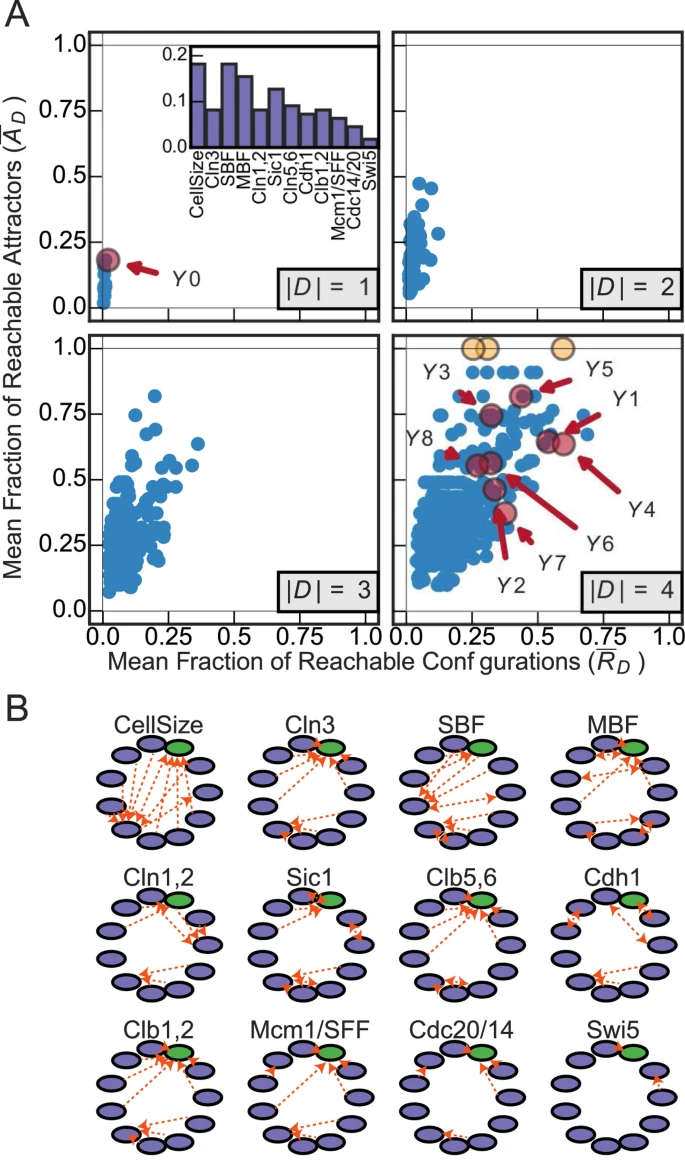
Network science has allowed us to understand the organization of complex systems across disciplines. However, there is a need to understand how to control them; for example, to identify strategies to revert a diseased cell to a healthy state in cancer treatment. Recent work in the field---based on linear control theory---suggests that the controllability of complex systems can be predicted solely from the graph of interactions between variables, without considering their dynamics. Such graph-based approaches have been used, for instance, to suggest that biological systems are harder to control and have appreciably different control profiles than social or technological systems. The methodology has also been increasingly used in many applications from financial to biochemical networks.
In work published today in Nature Scientific Reports, CNetS graduate student Alexander Gates and Professor Luis Rocha demonstrate that such graph-based methods fail to characterize controllability when dynamics are introduced. The study computed the control profiles of large ensembles of multivariate systems as well as existing Systems Biology models of biochemical regulation in various organisms.
This computational analysis shows that graph-based methods both undershoot and overshoot the number and which sets of critical variables best control dynamics, highlighting the importance of the actual system dynamics in determining control. Specifically, the analysis discovered that redundancy in the logic of automata transition functions, which is not represented in the interaction graph of the underlying network, plays a very important role in the control of complex systems. The work published today emphasizes the need to study dynamics in addition to graph theory if we wish to control complex networks.